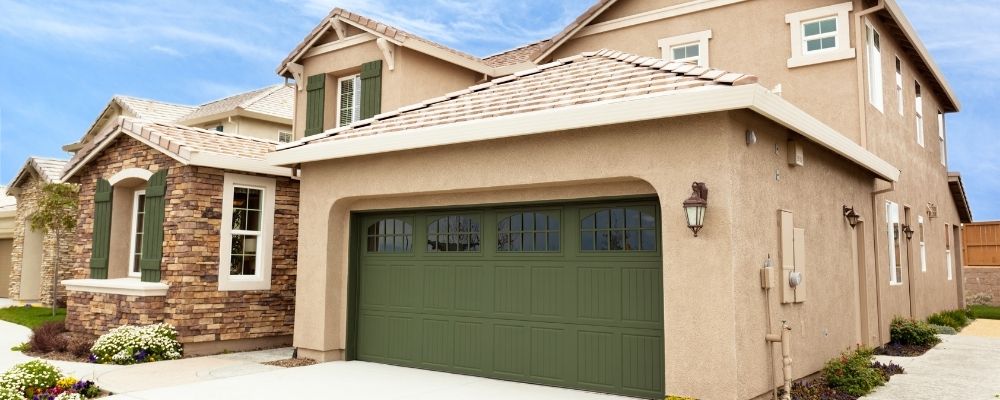If you want to make money as a real estate investor, you need to understand a few essential terms. One of those terms is cash flow, which refers to the movement of money in and out of your real estate business. It’s an important concept for you to have a handle on because it will impact the ultimate profits of your investment. So, to help you better understand how it works, here is a guide to cash flow in real estate.
What is Cash Flow in Real Estate?
Cash flow in real estate refers to the amount of money you bring in from a rental property after you factor in expenses. So, to properly determine your cash flow, you must thoroughly understand your income and expenses.
Your income is the amount of rent you’re charging a tenant. If you own a single-family home rental, then this is relatively easy to calculate because there will only be one rental amount. If you own a multi-family property, add up the total rent you charge for each unit.
Then tally up all of your monthly operating expenses. Expenses include your mortgage, property taxes, insurance, property manager fees, repairs, cash reserves, and anything else you pay to own and maintain the property.
Real Estate Cash Flow Formula
The formula for cash flow is fairly simple:
Cash Flow = Gross Income – Total Expenses
Gross income refers to the total rent you charge for each unit combined. Expenses include any payments you make to maintain the property and any cash reserves you decide to keep in the event of an emergency.
Real Estate Cash Flow Example
Income
- Number of units: 4
- Rent on each unit: $1000
Gross income: $4000
Expenses
- Mortgage: $1380
- Property Taxes: $864
- Insurance: $184
- Property Management Fees: $360
- Vacancy Reserve: $200 (5% of total rental income)
- Repair Reserves: $400 (10% of rental income)
Total Expenses: $3,388
Cash Flow = $4000 (Gross Income) – 3,388 (Total Expenses)
Cash Flow = $612
What is a Negative Cash flow Property?
A negative cash flow property means the monthly rental income is insufficient to cover the expenses. So, if you’re charging $1500 for rent but your costs are $2000, your property would have a negative cash flow of $500.
The owner of a negative cash flow property must pay the difference out of pocket or increase the rent to cover the loss. However, if you already have a tenant living on the property, you must wait until the lease term expires.
While it may seem counterintuitive, some investors purchase negative cash flow properties because they can often be bought at a reduced price. Then they may make renovations or add other improvements that will allow them to charge more rent.
What is a Positive Cash flow Property?
A positive cash flow property means the rental income exceeds the monthly expenses. So, if you charge $2500 for rent and your expenses only add up to $500, then you would have a positive cash flow of $500. With a positive cash flow property, the owner can collect the difference as profit or use it to reinvest in expanding their real estate business.
Positive cash flow is essential for the long-term health of an investment. While there may be strategic advantages in purchasing a negative cash flow property, the idea is to turn it around to make it cash-flow positive.
A negative cash flow property will eventually become a liability and you may eventually be forced to sell. Whereas, a positive cash flow property will provide a healthy stream of income that can help you create a nice cushion of savings to protect you against vacancies or emergency repairs.
Your cash flow may also change from month to month. Say you have a three-unit building where tenants pay $1000, and your expenses are $2200. Under normal circumstances, you’d have a positive cash flow of $800. But if one of the tenants decides to move out, you will have a negative cash flow of $200 until you manage to find someone to fill the vacancy. So, it’s essential to understand how cash flow in real estate works so you prepare for these changes.
Tips for Increasing Cash flow of an Investment Property

There are two basic ways to increase your cash flow: increase your income or decrease your expenses. Here are a few tips on how to make a property cash flow positive:
Keep Expenses as Low as Possible:
The simplest way to increase the cash flow is to keep your expenses as low as possible. For instance, as you expand your business, your financial picture changes, and you can refinance the loan to get a better rate. Or maybe you have the landscaper come once every two weeks instead of every week. While it may be worthwhile to make certain investments if they allow you to charge higher rent, try to eliminate any expenses that aren’t bringing you a direct ROI.
Self-Manage the Property:
Self-managing your rental property instead of hiring a professional property manager is another way to reduce expenses. This means you will have to do things like collect rent and perform maintenance on your own, which may not be feasible for some landlords. But this can be a good strategy for smaller landlords who feel comfortable taking on some responsibilities themselves and don’t want to pay the monthly fee.
Hire a CPA:
Another option is to hire a CPA to help you find deductions on your tax bill. You’ll have to pay the costs out of pocket, but if they can help you reduce your tax liabilities by a significant amount, it may be worth it.
Increase the Rent Annually:
If it isn’t possible to decrease your expenses, then the only way to increase your cash flow is to increase the rent. You can always gradually increase rent to keep up with the market rate. Or you can add upgrades or amenities to attract new residents who are willing to pay more for certain features. Maybe you put a washer and dryer in the building or install brand-new stainless-steel appliances to give the unit a more modern look. The best thing to do is to study the local rental market and determine which features are most in demand.
Divide Up the Property:
Another option is to divide the property differently to create more units. Instead of renting an entire home as one unit, you may decide to convert the finished basement into a separate unit and charge two rents. So maybe, instead of charging $2500 per month, you could charge $2000 for the main home and $1000 for the basement, increasing your cash flow by $500 for the same space. You may have to invest in significant renovations to ensure both areas are still livable. But it may be worth it for the extra monthly cash flow.



